January/February 2006
Travels with Heep
Winter Wonderland, South of the Border Style
Bugambilia is Spanish for bougainvillea;
The letter “J” is pronounced as an “H” in Spanish; therefore, a Jeep becomes a Heep.
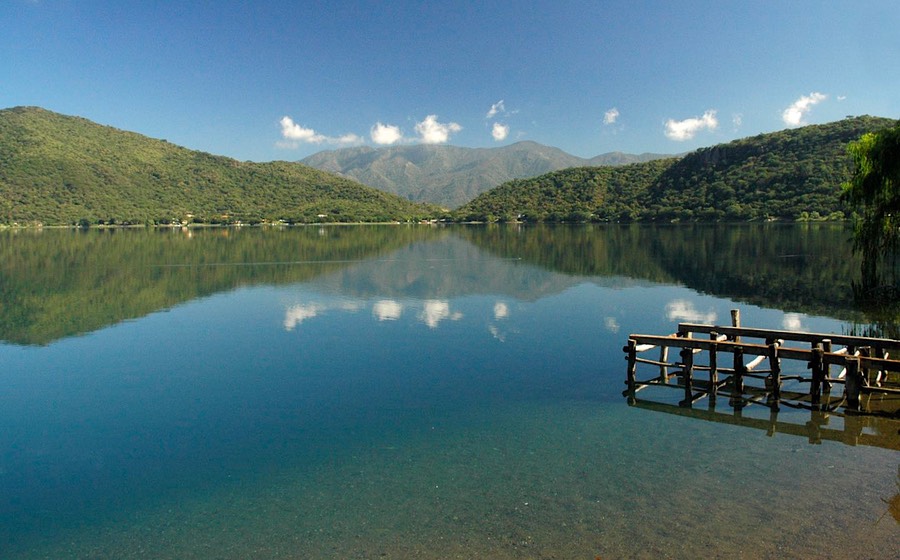
Well, we’re officially hooked. Mexico it is. THE place to be when you don’t want to get out your winter woolies and the temperature is falling, falling, falling; which is to say we’ve truly fallen in love with spending winters in Mexico. We crossed the border still treating this trip as an experiment and wondering how we would like it. Three years ago we spent three weeks in Mexico, mostly traveling with a large group, following the rig in front of us and trying to stay together. It was fun, but not our way to travel. We did spend a few days by ourselves at the end, before heading back out, but knew we were only breaking the surface of a Mexican experience. This year we decided to commit (at least tentatively) to being “in country” for about two months, and picked a route that would take us to at least some places less frequented by large groups. And we’ve had a ball.
Our choice this year was to explore what is called Colonial Mexico. This is the interior, mostly highland, area that was conquered and raped by the Spanish, then dominated by them for a long period before they were driven out by the indigenous peoples. This “driving out” was accomplished by a series of revolutions, the important dates of which are memorialized in street names all over the country: 16th of September, 20th of November, stuff like that. But you don’t want to hear all about Mexico history; neither did we, at least not TOO much.
So let’s talk about this huge country. What’s so great? And the other end of the stick ….. what’s not so great? (Because there are significant problems, too; and as Billy Bob Thornton says in one of our favorite movies, Bandit: “I have sanitation issues”.)
The Good……….. (and we mean VERY, VERY good)
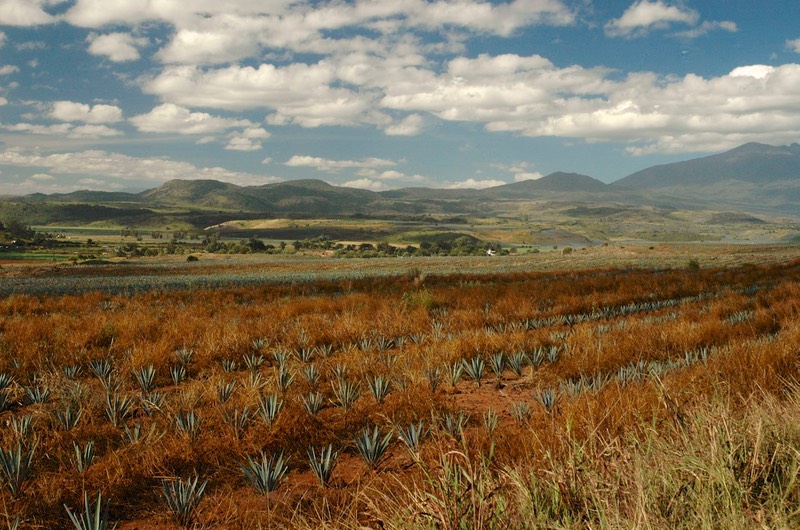
The country is beautiful, once you get a couple of days south of the border. For a couple of ex-Californians, it was like coming home. The countryside is similar to the area where we lived. The trees and plants are very familiar to us. The forested areas are covered with pines and eucalyptus, and there are many large forested areas. There are even national parks. There are some rolling hills, but generally we’re talking about mountainous regions. The roads wind up-and-over-and-down-again (repeat several times, slowly). The entire country, where there’s neither city nor desert, is developed in agriculture of various kinds. Lots of hay and corn (by this time of year mostly stacks of the drying leftovers that will be burned soon) and sugar cane in the fields. In the areas with water at hand, all sorts of tomatoes and other fruits and vegetables, along with pineapples, bananas, avocadoes, and citrus grove after citrus grove. Remember, much of the produce you eat all winter is grown in Mexico.
We also saw huge tracts of land given over to the lovely blue agave plant; this is what tequila is made from. More on that later!
Everywhere, we saw bougainvillea and all the other bright flowers of southern California in great profusion. The wisteria is just beginning to come into bloom, so we haven’t yet seen any huge displays; next year maybe, because we hope to stay later into the spring.
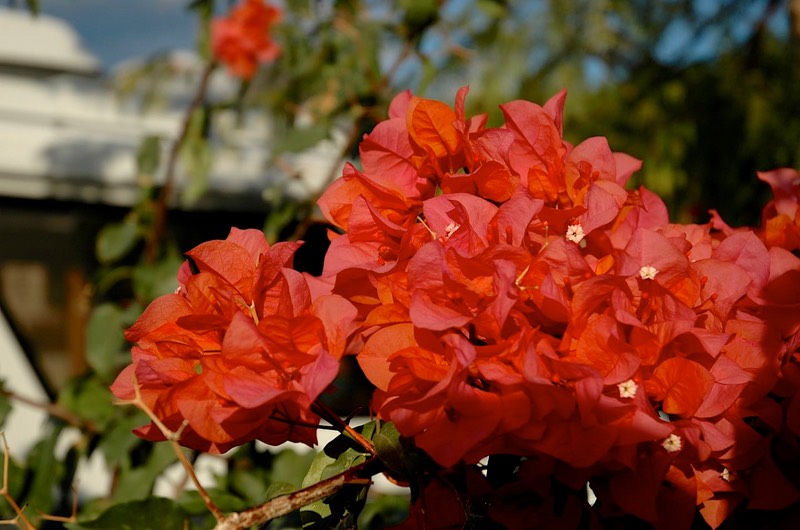
There are small entrepreneurs everywhere. We saw very little begging, but lots of little retail operations of all kinds. From shoe shine stands, to little roadside food stands, to market stalls for food, crafts, or clothes, and multitudes of small storefront businesses; most people have discovered a niche for themselves. While there certainly seems to be much less of what we might consider structured employment, the people have a real desire to get ahead and they most definitely are not lazy. One fellow showed up at the campground around 5:30pm, obviously after his regular work day, looking for a chance to wash trailers and motorhomes.
We recognize town names as though we were at home. The other day, in close succession, we passed signs for Los Angeles, San Francisco (both pointing in the wrong direction, I might add), Los Fresnos, and La Madera. Pretty neat!
We spent most of our trip in rural areas, and we thoroughly enjoyed the people riding donkeys along the road; we’ve seen plowing with various beasts (horses, donkeys, oxen); critters of all sorts along all the country roads, often right in the middle of the road; people also riding bicycles with 1-2 passengers; and men riding nice looking horses both along the road and in the cities; never women, however.
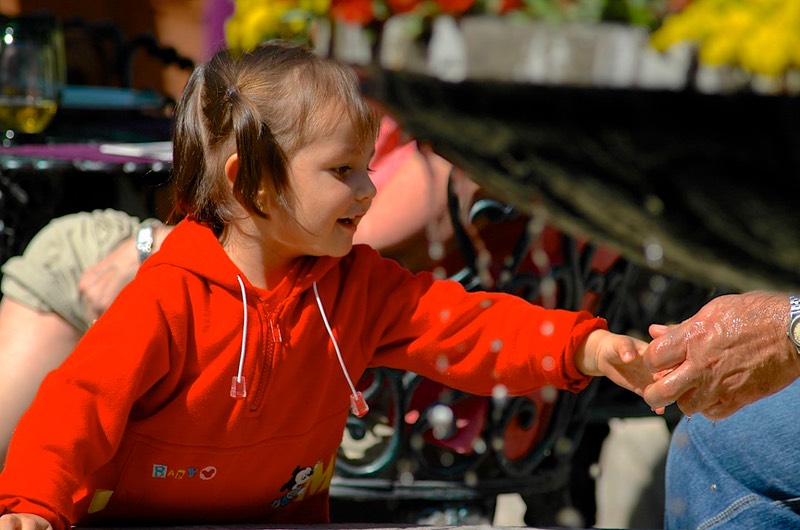
The children are all beautiful; their skin is healthy looking and tanned. They always appear happy; we never saw a whining child the whole two months.
In Texas, you can locate the center of town by looking for the courthouse; in Mexico, you look for the cathedral.
Have you ever, in the middle of the night, listened to a donkey braying away, complaining about something/nothing?
There is a delight in camping on the edge of town and walking to the market place every day to buy fresh produce. The food is wonderfully fresh and ripe and must be eaten NOW. Each time I buy more than I can easily carry (do you realize how much 2 kilos of strawberries weigh! -- and of course they will last 48 hours at best; ah, well, who can resist), and have to buy more carrying bags. Rick laughs and helps me carry stuff. I love talking with the sellers and interacting with them and having them laugh at my fractured Spanish; and there are little old ladies walking after you to offer a bunch of fresh chamomile or other herb for sale at some ridiculously low price.
We found these local markets in each little town through which we passed. Sometimes the market would be spread out all along the only roadbed, leading to VERY LARGE PROBLEMS. But everyone is patient, and eventually you can get through. The little towns often had market day once a week, and the surrounding countryside would be there, spending the day buying/selling and enjoying the outing. The larger cities had daily markets, augmented by a weekly bigger day.
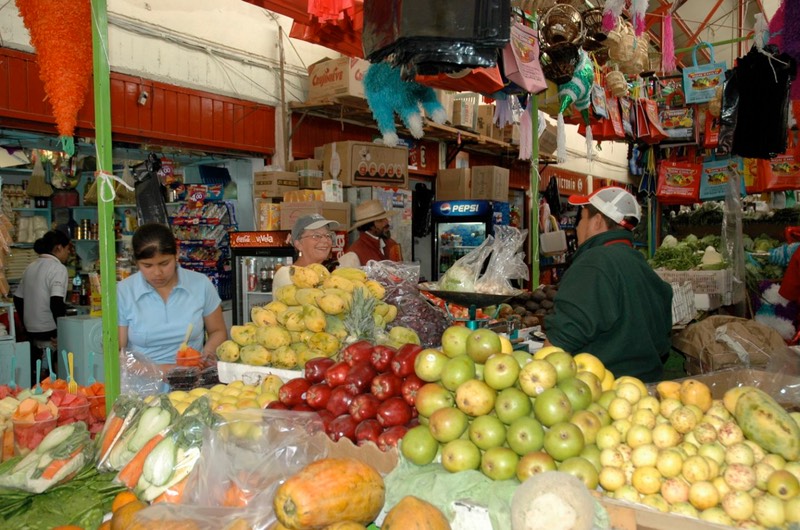
As I say, all the fruits and vegetables were fresh and beautiful; I developed a passion for making juice to go with breakfast. A combination of oranges and tangerines. I would squeeze enough for a couple of days at a time; it was great fun, and really, really inexpensive. In fact, the fresh produce is the best deal going in Mexico. While other budget items are not tremendously different from up north, strawberries at about $.70 per pound, juice oranges at about $.30, and the biggest, sweetest pineapple you’ve ever seen for about $2.00 makes it all taste even better.
The Mexicans party hearty – and late! We often would hear a party going on long into the night, with wonderful music. At first we’d wonder what the occasion was as we listened to fireworks going off, but we gradually learned that no occasion was needed, just being with friends on a Tuesday night was sufficient. A delight.
The incredible colonial architecture that’s everywhere really blew us away, not that we should have been surprised. You can say a whole lot against Spain and the way it superimposed itself on the local people, but they did build incredible cathedrals and civic structures. And built them to last; many, many are still there, have been well maintained, are still in daily use, and are glorious.
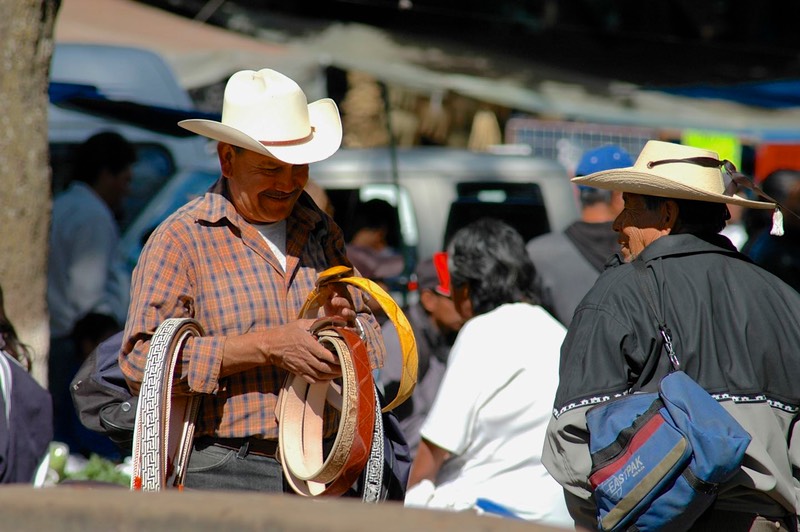
Mexico is full of hot springs; some, but not too many, are sulphurous. When they are attached to swimming resorts, there are called balnearios, some with camping. We stayed at two, and they were great experiences. Several enormous pools filled each day with warm water, very few people (during the week), and quite upscale. One had a huge pool only open at night and available only to the campers. We gloried in feeling special. As the pools are drained and filled daily, they need no chlorine-type stuff.
Perhaps the best single thing about spending time in this country is the people, the people, the people. Every Mexican we met was courteous, helpful, interested in us as individuals, honest, and wanting us to have a good experience. What else could you ask for.
Or maybe the best single thing was the fresh produce – fresh and beautiful and delicious. Coming back into the States it was a rude awakening to stop at the supermarket and buy tomatoes. The same Roma tomatoes I’d been eating for weeks. Only now they were shiny because they had been waxed, they were either over- or under-ripe, and they had very little flavor. I wanted to turn right around and head south again.
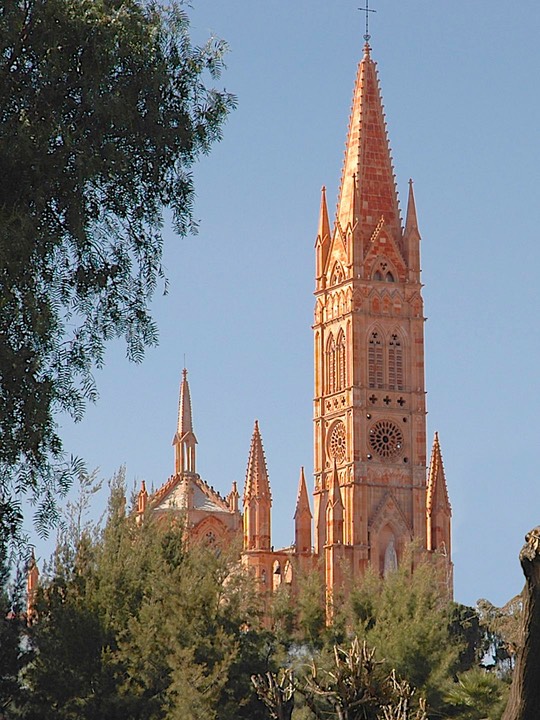
And we made so many new, great American and Canadian friends in the campgrounds where we stayed. People who winter in Mexico (for short or long periods) are an interesting lot, and far more likely to be Canadian than American. They share a certain confidence and a willingness to try new things; they are open to others, both local peoples and fellow travelers; enjoy a sense of challenge and adventure; and are generally very interested in meeting new friends and sharing stories of where they’ve been and where they’re going. Also, when you are traveling in a foreign land, hooking up with other Norte Americanos at the end of the day is fun, so a lot of meeting and sharing goes on in the campgrounds.
The price of fuel (at least the diesel that Fred drinks) is currently much lower than north of the border. All the fuel in Mexico is provided by Pemex, the national oil company. The prices are the same everywhere in the country (Rick really likes that) and the prices are controlled. As a result, the prices are far more stable. In fact they were very little different than on our last visit three years ago. We paid about $1.92 for diesel, about fifty cents less than stateside, while unleaded regular was about $2.32, similar to many areas in the US. For our Canadian friends, the prices in Mexico are even more of a treat.
Lastly and most importantly, Mexico is simply the easiest, least expensive and most direct way for North Americans to experience the joys of traveling in and learning from a different culture; and that makes it a grand idea.
The Bad………….
Mexican roads and Mexican drivers: By all reports, Mexico is committed to improving their road system. We saw lots of road work going on while we were there, and the roads in general seemed improved from our last visit (‘though we were mostly in a different part of the country this time so it’s hard to compare); but they have a long way to go. Especially in the towns and cities, the roads are still often cobble stoned or in poor repair. Out on the roads between towns things are not so bad. Also, roads are frequently very narrow and without shoulders. Worst of all, though, are the GALL DARNED (who says we don’t try to be politically sensitive?) TOPES! By long standing tradition, the only effective way to slow down the drivers is to put speed bumps everywhere, even on the cobble stoned sections where we’re already creeping along at a very slow and bumpy rate of progress. And yes, Virginia, they do become tiresome.
The drivers in Mexico are actually quite good once you come to grips with the local interpretations of the rules of the road. Rick has decided that they are not aggressive, simply very assertive. If they sense hesitation in the other driver they will immediately take advantage; but if you make the space yours, they respect that and let you blend in. El Heep was a great tool in Rick’s hands. Another of our camping friends observed us out on the highway without our knowledge and informed the group back in camp that Rick “drove like a Mexican”; Rick accepted this as a compliment.
The problem for us gringos really is the rules or lack of same. The locals park anywhere they please, often making the already narrow streets virtually impassable as the traffic coming both directions has to take turns slaloming down main street avoiding each other and all the parked cars. In Mexico, the Stop sign is treated as merely a traffic advisory; actually, this applies to all traffic signs. While it seems that the drivers do indeed stop at red lights and await the change to green, you’d best be ready to clear out when the change comes, ‘cause nobody is going to wait around for you to be ready to move. We had to laugh at the guide book recommendations to “always obey the signs, even if the locals don’t”; you’d be taking your life in your hands if you came to a proper stop at one of the “ALTO” signs leading into a traffic circle.
And of course, there’s the directional signage….. We’re sorry, but our commitment to truth, justice, and the ‘merican way, not to mention political correctness, prevents us from discussing the signage.
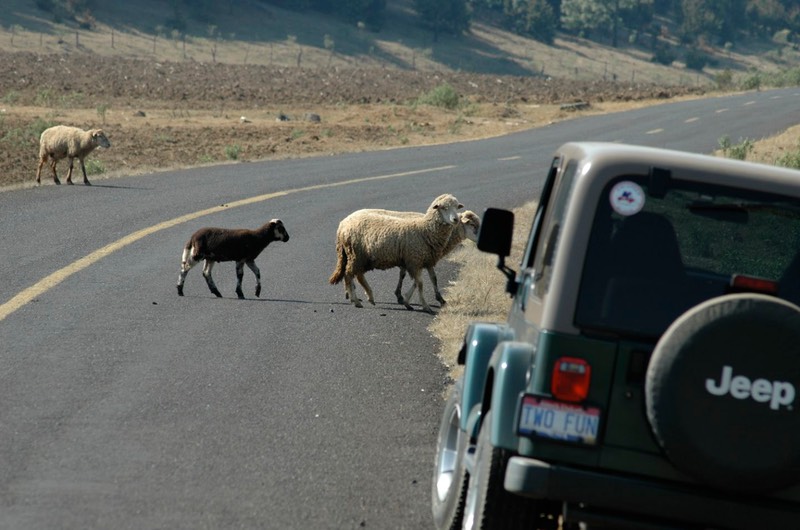
Moving on, the Mexicans do not share our humanitarian feelings about their animals. I think they simply don’t have the luxury. Time after time we saw animals tied to a fencepost alongside the road. Mostly they were set there to graze and could wander pretty far, and we were pretty sure they were being collected at night. And often they had enough to eat, and perhaps even some water available. But just as often we saw animals tied to fences, and tied so close they couldn’t lay (lie?) down without holding their heads up all the time and with no food or water at hand. To us, that’s cruelty. We suspect animals are simply animals in Mexico, are not as often kept as pets, and when people don’t have enough for themselves they don’t waste a lot of time worrying about four-legged critters. This was in the country; in the cities, we saw veterinarians on every corner, and suspect house pets in Mexico are treated as well as their compadres north of the border.
There are things you cannot find in Mexico, certain foods for instance. You adapt as you can, and take a supply of the things that matter the most. And we certainly should have brought a good Spanish dictionary with us; we never found a decent one after we got there. (Although others did, so we could have tried harder.) I’m making a list of things to take with us next year.
The image of too many people standing around with not enough to do has stayed with us. As an example, there was one railroad crossing we went over several times over a period of a couple of weeks. On average there would be 8 people working on repairing the crossing, with 12 standing around and watching, and another dozen or so working on selling stuff to all the traffic that has to slow down. There always seemed to be lots of people sitting around in the plazas in the middle of the day. Why, we wondered? Some of this is lifestyle choices, and could easily be listed in the Good category; the Mexican people are extremely family oriented and spend lots of time with their families and play with their children a lot. But we also had to wonder who was getting work done if everyone is out in the plaza.
As an adjunct to this, it didn’t seem to us that the children spent very much of their day in school. They were always out and about by noon or one o’clock. The ones in Catholic schools sure looked cute in their uniforms, but otherwise the teenagers looked just like ours do. Some even had tattoos. Damn!
One last comment in the “Bad” section, one that is simply our prejudice. We spent time in two areas that have attracted a great number of expatriates, and there was something about the whole deal that we didn’t care for. The Lake Chapala area near Guadalajara has a large expatriate Canadian and American population; it made the area pricey, touristy, and filled with “American”-type stuff: I thought I was in San Diego. Then later on we spent two wonderful weeks in San Miguel de Allende, with possibly the largest expatriate population in Mexico. We benefited from it greatly, as you will see later on, but the city even had an English newspaper for the locals. What we’re trying to say is that much of what makes Mexico special to us is that it’s not American in its sensibility, and that’s the way we like it! But enough of the soap boxing, already.
The Ugly………..
The public toilets were frequently disgusting and I tried never to use them except in an emergency. You almost always had to pay (usually 2 pesos, roughly 20 cents), sometimes they had toilet paper, mostly didn’t have toilet seats. Anything else you want to know? On a high note, however, once we stopped at a Pemex to use the facilities, which were lovely and clean. Outside, there was a hand-printed sign from some locals thanking the people who were in charge of keeping it that way!
We found some of the towns to be very dirty, particularly nearer the border. Lots of rubble and mess. All this tends to give you “entry doldrums” for the first couple of days. This was much less prevalent as we got further down into the country, and seemed to us to be less of a problem than when we were down the last time. This is also an area where the government is attempting to make improvements, and we think it shows.
The burning that is habitually done in the fields everywhere is pretty awful; it leaves a haze over the countryside and all the cities. The stubble from the harvested crop is what is being burned: sugar canes, corn, stuff like that. We have to remember that this practice was common in the US until not too long ago. Sure hope Mexico figures out something else soon. This is one of the biggest sources of the pollution we all hear about and that is all too real near large cities.
Movin’ On…...….
Well, now that you know what we think about Mexico and the Mexican people, perhaps you’d like to hear a little about where we went this winter, and some of our adventures.
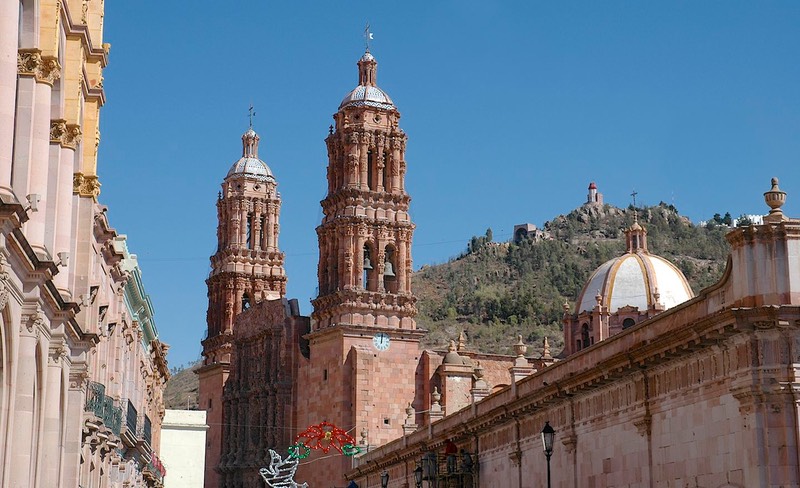
We crossed the border in Texas, leaving the motorcycle in Nacogdoches. We only wanted to take a total of two vehicles with us; Mexico has long held that you could not bring in more vehicles than you had drivers, although we had heard that the rules were changing. But we weren’t interested in getting to the border and finding out we had heard wrong. We thought taking the Jeep would be fun and were just a little leery about traffic safety and perhaps theft issues with the bike; these fears were probably not justified, but overall we think we made a good decision. So we found a home for the motorcycle, then dropped down through Houston and over to Eagle Pass to cross the border.
It was a straightforward small town crossing, although the coach did suffer some damage from high, narrow curbs. Boo-hoo. Rick had an amazingly positive outlook, “Well, we don’t have to worry about whether or not we’ll damage the coach”. We took advantage of low labor costs and had the damage repaired during our visit to Villa Corona for less than $100.
Our first stop was in Zacatecas. We stayed two days in this great colonial town. The highlight probably was visiting an incredibly old monastery in ruins. It was quite beautiful and unique, mostly because it was in ruins. Repaired it might not have been so special.
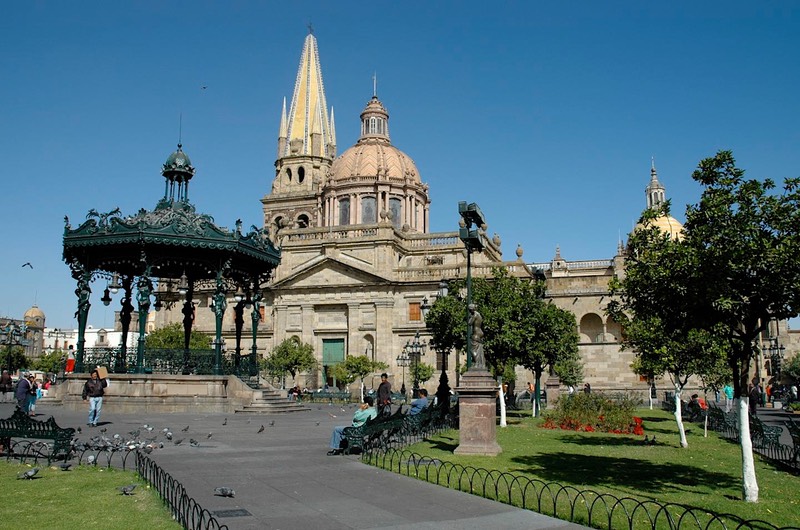
Heading south, we stopped at the archeological ruins at La Quemada, with a great, spanking new visitor center; then over the hills and the barrancas to Guadalajara, Mexico’s second largest city. We stayed about 20 miles south of the city, at a parque aquatico with balnearios, outside Villa Corona. What a delightful spot. Hot water pools, etc. (see above). We made lots of new friends here; we could walk to the village for fresh produce and to watch them making tortillas; there was a village nearby that was “home of the mariachis”, which we thoroughly enjoyed. What a great place. Since the campground was on the edge of town and there was a road to the next village, we even had a place to walk in the mornings, the only time we were able to do so all winter.
in Villa Corona, there was also a trip to Tequila, where they make the you-know-what. The visit was interesting and informative. Tequila is made from the blue agave plant; agave grows in lots of places in California, although a different variety, so again it was quite familiar to us. Not to be left out at all, we made trips into Guadalajara to see the sights, and we wandered towards the Lake Chapala area, buying this absolutely incredible rug in Ajijic. The rug purchase was a real adventure, involving a total of three trips to talk to the rug man, Gregorio, with whom we became well acquainted. The rug we had chosen is made by the Zapotec Indians from Teotitlan, near Oaxaca. We will visit there next winter, and watch the rugs being woven.
But probably our best memory of Villa Corona was “Aguaaaaa-man” and “Gaaaas-man.” Trucks came through the park every day, selling bottled water and propane to the campers. We knew they were coming from a long ways off, because they had loudspeakers on their trucks and would call out s-l-o-w-l-y what it was they had to sell. They did this in a low, drawn-out voice kind of like the holy men at the minarets.
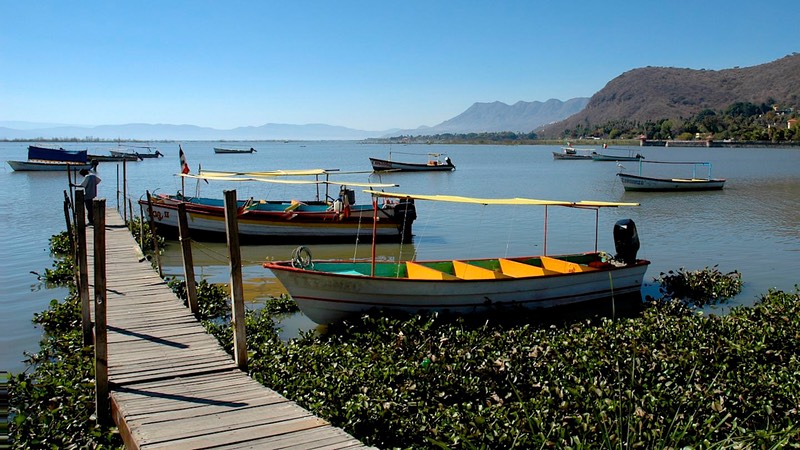
we left Villa Corona, heading for Patzcuaro, we took a wrong turn and got lost in (the unfortunately large city of) Zamora along the way; ugh! This is never fun, as the danger gets bigger that the streets will simply get smaller – and smaller – and smaller. Luckily we found the right sort of “eat me” cookies and were able to exit without incident. Dodged that bullet! Back out in the country, we were climbing higher, as Patzcuaro is over 7000 feet. It was getting greener and the kind of stuff being sold along the road was changing as we moved into a new area. Quarrying is very common in these mountains, with whole hillsides opened up and looking ugly.
Patzcuaro: what to say about this city, probably our favorite spot all winter. Patzcuaro is smaller than many cities, and you can walk into town and all over until you are exhausted, then find one of the ubiquitous collectivos (VW buses filled with seats and crammed with folks of all sorts – about 40 cents to get back to the campground). A wonderful market with the best produce we saw anywhere. Oranges, tangerines, berries, avocadoes, cauliflower, broccoli, lettuce, bananas – all bright and beautiful. We went hiking up one of the local “hills” which included going up over 400 steps to the top of the mountain. What an incredible view. Behind the campground, guys were making adobe in our backyard, with the help of a horse; and a shepherd brought his charges through 2-3 times a week to trim the grass by arrangement with the campground owner.
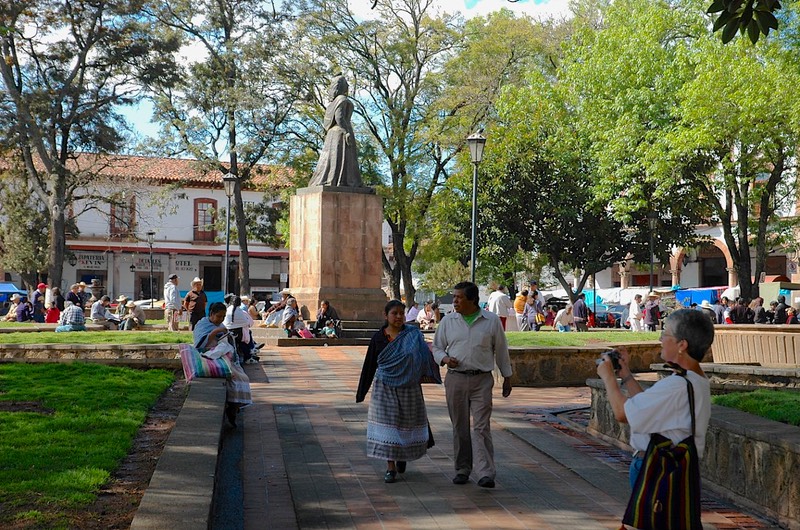
I was looking for the perfect brightly painted patio table, having been told by someone who had one that they were made in Patzcuaro. Finally had to settle for one we found in an outlying village, unpainted. Will do the work myself. (What a job!) We did find couch pillow covers to go with the new rug, and made lots more new friends. All this in a lovely colonial town that is a UNICEF World Heritage Site.
This was a great spot from which to take day trips to the smaller towns nearby. This region is famous for its crafts: copper, white pine furniture, belts, leather-covered chairs, pottery. We enjoyed them all. One day, we dropped down to Uruapan, which looks just like Santa Barbara (avocado and citrus trees, palms), only in an industrial setting; and then home by way of Paracho and a new guitar.
Paracho is where most of the hand-made guitars in the western world are made. We just planned to wander around for a bit.
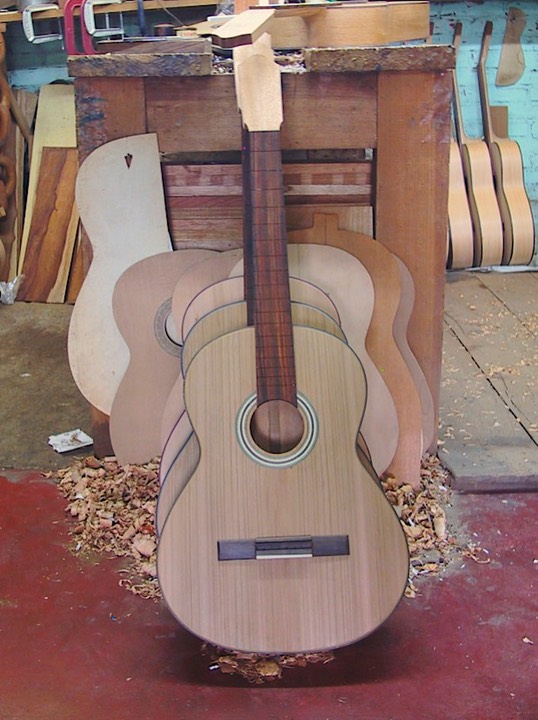
You know how that works. Our purchase is a truly beautiful work of art, and Rick is thoroughly enjoying learning how to play it. It is completely hand made with no power tools at all; absolutely amazing. Perhaps the best part of the experience was meeting and talking with the man who made it; he spent a long time talking with us about his techniques. A week later we went back and visited him again, and he answered the questions Rick had come up with in between. Jesus H. Fuerte is now a new friend.
On this second trip we wandered more of the countryside, getting thoroughly lost trying to find a little town. This puzzle was finally solved by some delightful teenagers who jumped into their van and led us to a dirt road that would take us where we wanted to go; a road that led us through a large band of sheep that got all excited and started running around us, leaping from side to side across the road. A real adventure. “Donde esta San Felipe?” we had asked the teenagers. Our Spanish was beginning to work a little!
We made two day-trips to Morelia while in Patzcuaro; what a city! These colonial towns are all spectacular, and each is a long-term destination all by itself. The main plaza in Morelia is like Union Square in San Francisco (the real SF, in California), very sophisticated. And this is a city of music. Another year we will visit here again.
Oh yes, and we DID get to see the Super Bowl, in Patzcuaro. Many of the Canadians in the campgrounds have a satellite service that goes this far south, and someone rigged up a TV in a little clubhouse where we could all see it. We BBQed, ate ourselves silly, lots of cervesas were drunk, and we were the only ones rooting for the Steelers. (We were very gracious in victory……………)
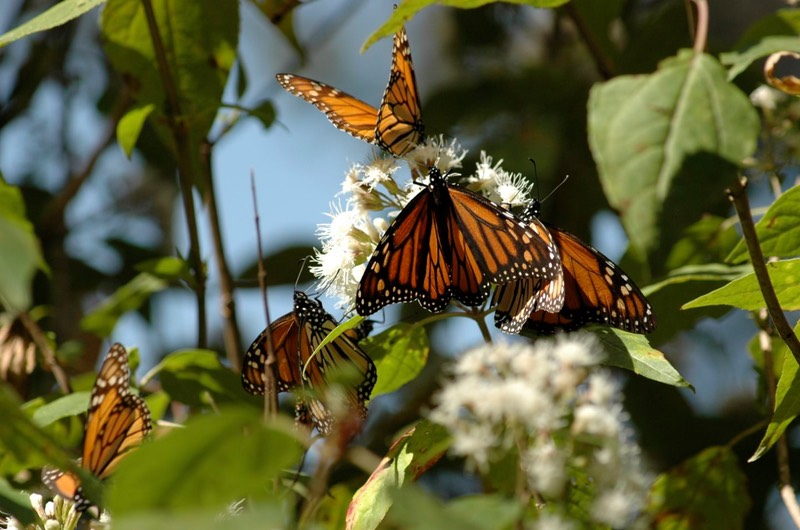
On to the butterflies. There are several butterfly preserves in the highlands of Mexico. El Rosario is possibly the most easily accessed, and a popular stop. The Monarchs winter here (but these are eastern Monarchs, not the ones we had been used to along the California coast). Up at 10,000 feet, this is a significant climb. You drive to the town of Ocampo, at about 8,000 feet. Then, in a small vehicle (El Heep was perfecto), you take this brick road that goes straight up the mountain to San Luis, at maybe 9,000 feet. Then it’s hoofing it from there. But it’s worth it. The butterflies don’t get active until mid-morning, then they start to fly around. About 2.5 million of them. Yup. They land on you, they are in the air, they cover the trees, they cover the ground. Incredible. What an experience.
The butterflies were a detour on our way to what had originally been intended as our first, most major stop of the winter: San Miguel de Allende. This city is a major stopover for folks traveling in Mexico, and for many it becomes a permanent home. As mentioned, San Miguel has a huge expat population. It’s a very popular place to come to take lessons: Spanish, painting, cooking, and much more. There are concerts several times a week, and music/dancing in the clubs every night.
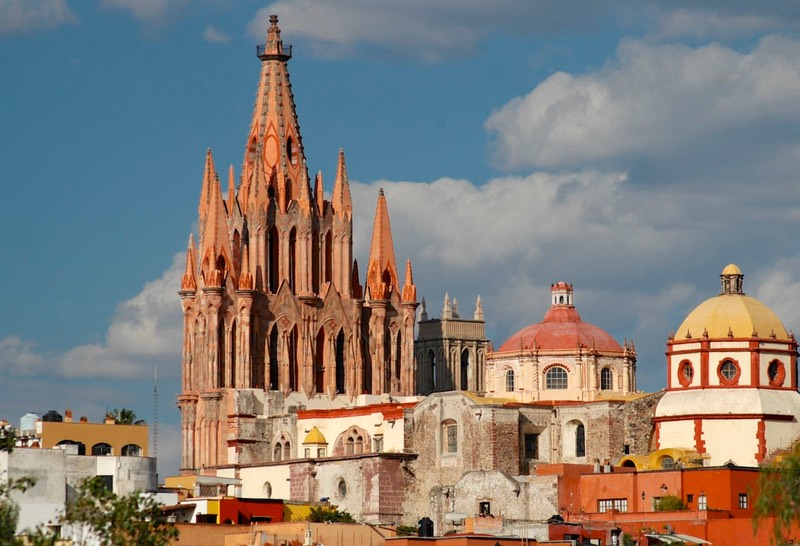
We approached warily. By this time we had become pretty immersed in the Mexican culture, and weren’t excited about a bunch of “American” stuff going on. The first few days were kind of hard, despite the fact that this is an incredibly lovely, well preserved city full of wonderful architecture, jardins (plazas with gardens), churches, and no end of charm; and another World Heritage Site. But San Miguel’s colonial center has been taken over by the expats. We found that they are a force for good, largely, but have erased some of the old flavor of the city. And it’s a very touristy town. We went to a very nice classical piano concert in a lovely church setting (think: Mozart in Cambria or Los Osos). But the voices in the audience were East Coast harsh. And everywhere you went there were gringos in shorts and floppy hats. We find we have become snobs!
But we settled in. the campground was great. We made lots more new friends, and renewed friendships with people we had run into earlier in the winter. And San Miguel has wonderful things to offer. We were able to go to a Delta blues concert in a big tent; and twice we went to a restaurant for the Flamenco guitar and dancing. And there was a very good produce market; as usual I bought more than I could carry. (And this time we were further from home.) I made friends with the guys in the market by asking if they had a donkey I could rent to carry all my packages; after that each time they saw me they yelled out “donkey” in recognition. It was fun.
And Rick made a wonderful friend. He wanted to take some guitar lessons while we were still in Mexico, as we are so seldom in one spot long enough to do so. Well, checking at the local music store hooked us up with Sergio, and a wonderful friend he became. Sergio is a terrific musician who, with his wife and daughter, forms the core of the Flamenco group we enjoyed so much (along with another guitar, a third dancer, and “Paco on the box”, the percussionist who produced magical rhythms beating on the wooden box upon which he also sat). They perform four nights a week in towns around the area; he also plays a Spanish harp for the lunch crowd at one of the local hotels, plays the flute and much more. His poquito English was fortunately much better than our mucho poquito Spanish, so most of the time we managed fine. The whole experience was absolutely enchanting. Rick learned some guitar, we were introduced to the Flamenco, we ended up visiting Sergio’s home to see his two lovely horses, and in the end we got to meet another new friend when Sergio asked us to deliver a book as a gift to a guitar maker friend in San Antonio, Texas. But best of all, we have a new friend in Mexico to visit next time we come to San Miguel.
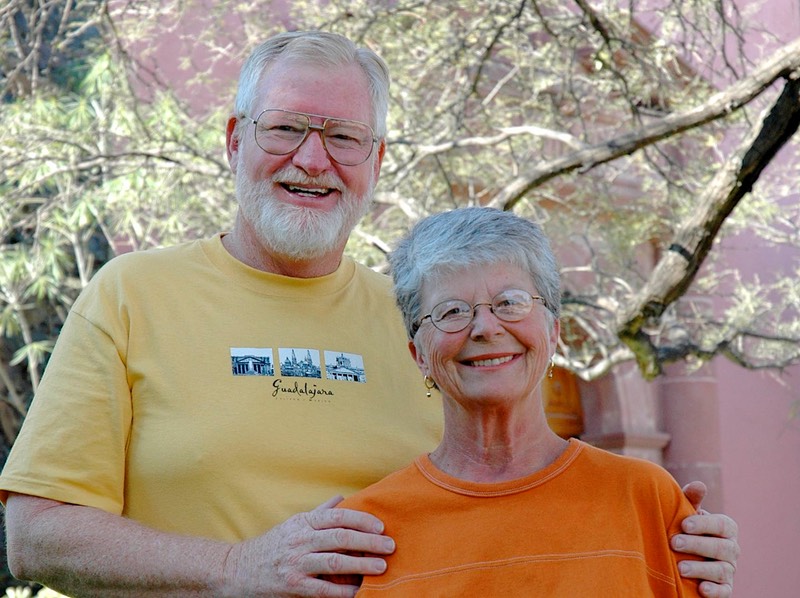
We made nice day trips to Dolores Hidalgo and Queretaro. These are two highlights on the “colonial circuit.” Dolores Hidalgo is internationally known for its talavera pottery (we succumbed only a little) and is close to San Miguel. Queretaro was more special for us. This lovely colonial city is, like Morelia, a mecca for the music lover. There were lots of concert opportunities, and we briefly considered moving to a campground there (it’s about 45 minutes from San Miguel). But Rick was taking lessons and we had other activities planned. Another year we will come to Queretaro to stay, and enjoy the music in this beautiful setting.
Along with shortchanging Queretaro, we found we were preparing to end our Mexican trip without visiting nearby Guanajuato. We had fully intended to camp there for a week or so, as this small city is supposed to be very special; but we were running out of steam, and we had made commitments in the States which precluded us giving Guanajuato more than a day or so. We thought this inadequate. So, we reluctantly decided to save this old mining town for next year.
We said goodbye to all our new, wonderful friends, and started up the hill. It was a sad farewell; neither of us was quite ready to leave, but not ready to start a new “project” – a new town. Our compromise was to plan a route that would take us through some new, rugged territory that the guidebook said was quite spectacular and had some interesting sights to see.
It was both, on a grand scale: VERY rugged and beautiful, and QUITE interesting. We had chosen a road that, as Rick quickly announced, was “not for the faint of heart.” Up and down, very tight turns, no edge, all that and more. Buses, burros, cows, and people all over the road; all the time. We went from 4,000 feet to over 8,000 feet, then down to 2,500 and back up to 6,500, then down again. Temperatures dropped from 65 degrees to 45 degrees in about a half-hour’s time. We stopped in the village of Bernal, well known for a rock monolith and a charming square. A good place to visit; also the scene of our last opportunity for the Mexican ice cream brand called Holanda, which is muy bueno.
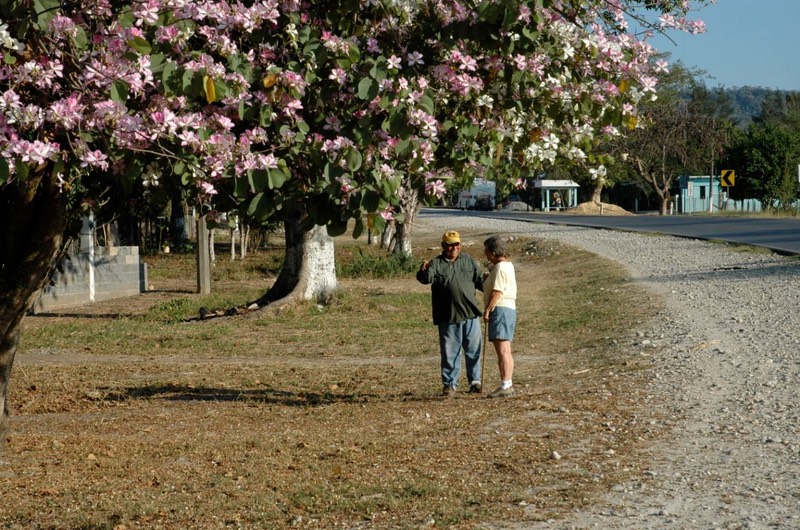
Beyond Bernal and over the mountains the vegetation became very tropical; we were in the northernmost rain forest in the Americas, and now at about 2,500 feet. We tried to stop in Jalpan, a small town well known for its cathedral (more in a minute). But it was Sunday morning. It was market day. it had just rained, buckets, and everything was all goopy. And…..there was a marathon going through the town with many policia directing traffic and, specifically, preventing large motorhomes from parking. So we passed. Later in the day we stopped in a similar town, Landa. These small towns are historical because Father Junipero Serra built a series of 5 churches in this area, and spent several years here. They have been restored and each is very interesting. The one in Landa was quite ornate and in a lovely setting. And we’re still on this wild road. Soon we dropped down to 345 feet, joined the main road, sighed with relief, and trundled on.
The mountains we had gone through were the Sierra Madre Oriental and we now traveled up the east side, moving north toward the border, suddenly at sea level. We were in the middle of sugar cane, citrus and mango groves, with trucks going in all directions taking the harvest to the processing plants. By now it had been a long day, was dark, and we were ready to stop, but could find none of our usual spots: Pemex stations, campgrounds were not to be found or else in the middle of very noisy areas. Finally, we pulled over to the side of the road on the edge of a little town. Shortly afterward the street lights came on, a good sign; and a police car drifted by. We felt comfortable and pretty safe. It was a bit noisy, but we managed. Then…..at six am we heard rattling outside our door. I looked out. There was a little food stall right outside, and the young couple who’s spot it was were there. They had just thrown open the stall window and she was cooking breakfast to sell to the truckers going by on the road. So we waved cheerfully, started the engine, and got out of their way.
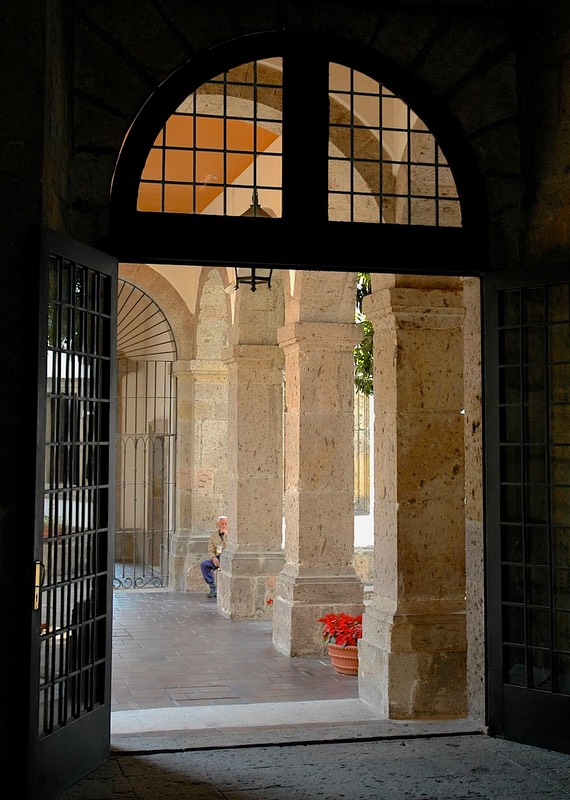
Soon the landscape became much more similar to southern Texas or the southwest. We crossed over into the state of Tamaulipas and were stopped by the border guards. I had known I couldn’t take any of my beloved citrus back into the states, but they would have collected it here at their border, too. Thankfully I had squeezed every remaining bit into juice the night before, so they didn’t get a thing! Hah!
We had a pretty day for our last one in Mexico. We came back across the Tropic of Cancer, and moved up toward the border crossing near Reynosa. Border crossings are always problematical. This was no exception.
We had had a wonderful winter. We went through the states of Coahuila, Guadalajara, Guanajuato, Jalisco, Tamaulipas, Michoacan, Nuevo Leon, Zacatecas, San Luis Potosi, and others I’ve already forgotten. We saw incredible places and met wonderful people of all sorts. We can hardly wait to return. November will most likely find us somewhere on the Pacific Coast mainland, soaking up the sun on some deserted beach. Come join us, amigos and amigas.
Ricardo y Katalina (who has now joined the ranks of the official – if unpaid -- tour photographers)
Click here for more pictures from Mexico.